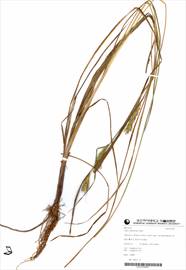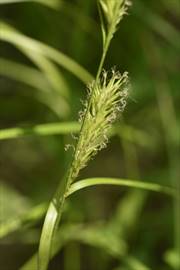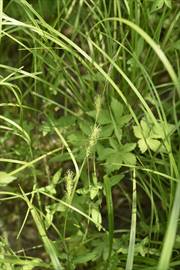Scientific Name
Carex nakasimae Ohwi
Subgeneric Classification (Roalson et al. 2021)
| subgenus Carex; Hirta-Praelongae Clade; Hirta Clade |
Habitats
Occurs in Seoul, Gyeonggi or Gyeongnam.
Stem
Scattered growth (?) or Clumped growth (?), with basal sheath color dark brown to reddish brown, and length about 50-80 cm.
Leaves
Leaves longer than the stem, have glabrous surfaces, width about 3-4 mm.
Inflorescence
The number of spikes two or more. Spike shapes different (showing distinct sexual characteristics), with all spikes unisexual, spikes arranged loosely. Terminal spike sexuality staminate. Lateral spike sexuality pistillate, and erect to ascend. Lateral spike length about 3-5 cm. Terminal spike length about 3-4 cm. Number of spikes per node one (one spike in one bract).
Bract
Lowermost bract shape leaf-like.
Glume
Staminate glume awn absent. Pistillate glume awn short (awn less than one-third of the total length). Pistillate glume color whitish green to light brown.
Perigynium
Transverse section trigonous to terete. Perigynium shape ovate-lanceolate (the broadest part near the base), and densely flowered. Perigynium glabrous or hairy or pubescent. Beak long (beak more than one-third of the total length), thin (the beak is clearly distinguished from the perigynium, and the starting point of the beak is less than one-third of the widest part of the perigynium) or thick (the beak is not distinguished from the perigynium , and the starting point of the beak is more than one-third of the widest part of the perigynium), with bidentate to bifid mouth. Length 8-9 mm.
Achene
Appendage absent, no constrictions.
Copyright © 2024. All rights reserved.



